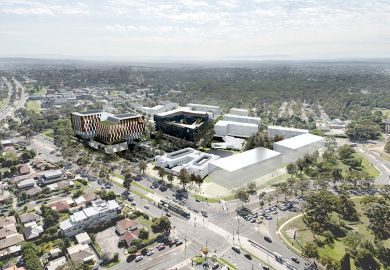It is sometimes claimed that you can walk the 70-odd miles from Cambridge to Oxford without ever leaving land owned by Trinity College, Cambridge. Apocryphal, almost certainly, but it makes the point that higher education institutions have long been landlords of note.
In recent years, however, this role as occupants and custodians of large tracts of land has morphed into something else: property development, some would say speculation.
There are various factors driving this. In systems with higher tuition fees in particular, growth in student numbers – domestic and international – has both allowed and required capital investment in accommodation, teaching facilities and in the wider student experience.
This has given rise to new partnership models with the private sector, particularly in the highly profitable area of student accommodation. But it has not just been about finding bedrooms for undergraduates.
We have seen a broader shift towards a commercial outlook: making more of what one vice-chancellor describes as universities’ “lazy assets”, in part to mitigate declines in state funding.
In our cover story, we explore how this relationship between universities and real estate has changed, and the motivations behind what are sometimes billion-pound or dollar deals.
We also explore the risks of such investments, how the proceeds are being used and the attitudes of higher education staff.
Perhaps inevitably there are those who view it with disapproval, suspicious that this “mission creep” will detract from, rather than help to support, the institution’s core activities of teaching and research.
Others, however, are clear that this is now business as usual for academic institutions in a competitive world, in which state support continues to ebb away.
Property is just one of the areas in which universities have become much more comfortable – at least at the executive level – with overtly commercial practices.
We have seen institutions going to the money markets, for example, to help finance these building sprees (taking advantage of their high credit ratings and rock-bottom interest rates).
Just last week, we reported on the University of California system’s use of a multi-generational investment tool, as it seeks to raise $2 billion (£1.59 billion) in so-called “century bonds”.
While some will feel uncomfortable with such activity tying future generations to a 100-year repayment schedule, the real question is not whether universities should engage in commercial activity so much, but rather to ensure such activity is undertaken in the right way and for the right reasons.
One senior executive at an Australian university (with the job title “vice-president for strategy and development”) tells us that she keeps a copy of the university charter on her desk to help guide her decisions and keep the university’s mission at front of mind.
However, it is worth reflecting that the role of the university today has strayed beyond a pure focus on teaching and research, and its wider social and economic role is often crucial.
This is illustrated by how often university development projects sit alongside major city infrastructure projects, such as new transport hubs, emphasising the hand-in-glove nature of cities and universities.
Our article also touches on the shift by some institutions away from outlying estate into more central locations, which perhaps reflects the reality of increasingly urban living, and what students want.
Whether this proves a good bet in the long term, time will tell.
For those who object on principle, it’s perhaps worth reflecting that not all business is conducted in the same way, and universities should be well placed to prioritise sensible risk management and maintain their focus on institutional goals, free as they are from the pressure to create shareholder value. It also, as one vice-chancellor points out, helps to keep the lights on – and salaries paid.
Register to continue
Why register?
- Registration is free and only takes a moment
- Once registered, you can read 3 articles a month
- Sign up for our newsletter
Subscribe
Or subscribe for unlimited access to:
- Unlimited access to news, views, insights & reviews
- Digital editions
- Digital access to THE’s university and college rankings analysis
Already registered or a current subscriber?


